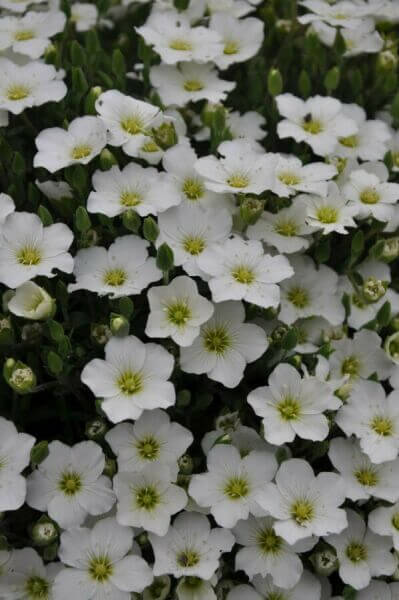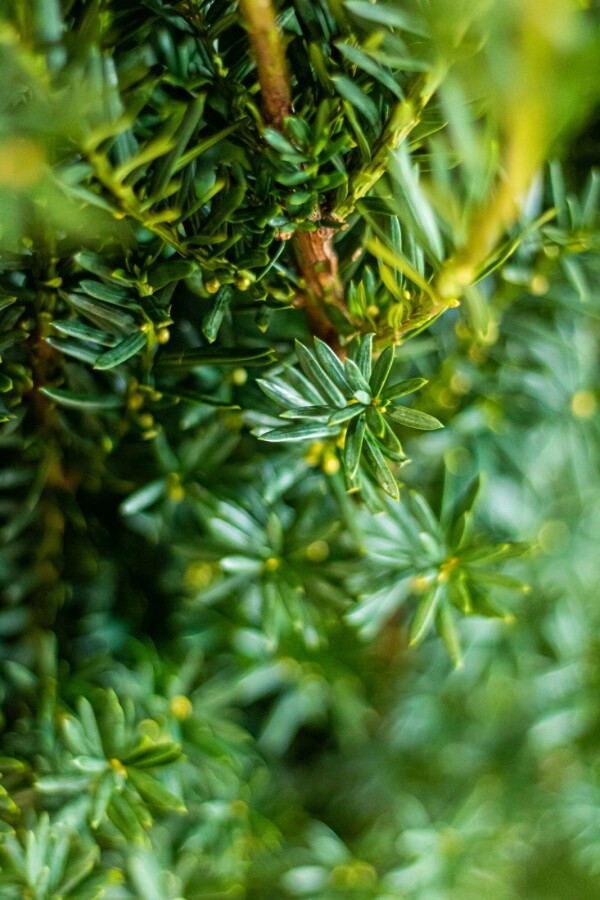Hedge Plants For Garden Design
Hedge Plants For Formal Borders
Enhance your garden's appeal with lush hedge ranges such as Yew (Taxus), Thuja, Laurel, Photinia, and Bamboo, celebrated for their structural integrity and ecological benefits.
Yew and Thuja provide evergreen coverage and winter season resilience, while Laurel uses rapid growth and broad, fragrant leaves.
Photinia includes seasonal charm with its vibrant red foliage, and Bamboo provides a low-maintenance, serene ambiance.
These hedges improve air quality, lower noise, and create tranquil, private areas.
Appropriate planting, spacing, and upkeep ensure vigorous development and ecological consistency.
Check out how these lavish varieties can elevate your garden's appeal and wellness.
Key Takeaways
Change Your Garden With Lush Hedge Varieties
- Select Yew for its dense, evergreen development and unrivaled durability.
- Opt for Laurel for its quick development and broad leaves, ensuring quick privacy.
- Select Photinia for its dynamic seasonal foliage, which turns a striking dark red.
- Utilize Bamboo for a low-maintenance, winter-hardy hedge with aesthetic appeal.
- Space plants 2-3 per meter and prune routinely for optimum development and health.
Popular Hedge Plants
When changing a garden with lavish hedge ranges, it's necessary to think about popular hedge plants such as Yew, Thuja, Laurel, and Photinia due to their special attributes and advantages.
Yew (Taxus) is extremely respected for its durability and thick, green development, making it a prime option for withstanding landscapes.
Thuja is noted for its evergreen foliage and robust winter season strength.
Photinia includes seasonal vibrancy with red leaves that darken with time, developing vibrant visual appeal.
Laurel offers fast growth and aromatic, broad leaves, perfect for fast privacy.
Additionally, Bamboo is an excellent option for atmosphere, using a low-maintenance, winter-hardy alternative that improves the garden's aesthetic with its elegant, swaying canes.
These selections deal with a variety of horticultural requirements and preferences.
Advantages of Garden Hedges
Garden hedges offer a multitude of advantages, making them an important addition to any landscape. These natural barriers are affordable to implement and supply substantial wind defense, improving air flow and contributing to noise reduction. The dense foliage of hedges like Thuja and Beech makes sure personal privacy by blocking exposure, developing a remote and serene environment.
Hedges likewise play an essential role in microclimate regulation, offering a steady environment that fosters plant development and minimizes temperature level fluctuations. Their detailed leaf structures filter contaminants, enhancing air quality and adding to a much healthier garden ecosystem.
Furthermore, hedges master noise reduction, soaking up and deflecting sound waves to lower ambient sound levels. This dual performance of supplying both visual and acoustic privacy boosts the overall tranquility and visual appeal of any garden.
Planting and Maintenance Tips
For a successful hedge, precise preparation of the planting location is crucial. Guarantee the soil has appropriate pH and drain to support strong root advancement.
Area the plants properly for the picked types. Water the hedge regularly during its initial growth phase, adjusting as needed with seasonal changes.
Execute a methodical insect control and disease prevention technique, using organic or chemical treatments when required. Routinely examine for aphids, termites, and fungal infections.
Apply mulch to keep wetness and suppress weeds. Seasonal pruning promotes dense growth and air circulation, necessary for plant health.
Following these standards will assist you cultivate a lively, properly maintained hedge that boosts the appeal of your garden.
Spacing and Cutting Guidelines
Spacing and Trimming Standards
Appropriate spacing and trimming are essential for cultivating healthy, visually appealing hedges. Appropriate spacing guarantees each plant receives sufficient nutrients, light, and air flow.
Follow these standards for optimal hedge upkeep:
- Spacing: Position hedge plants 2-3 plants per meter to motivate robust growth.
- Pruning Strategies: Routine pruning is important for keeping wanted hedge height and shape. Trim brand-new development in summertime and cut down older wood throughout winter.
- Seasonal Care: Adjust cutting schedules and techniques according to seasonal requirements to ensure plant health.
- Hedge Height: Routinely monitor and trim to maintain the wanted hedge height and accomplish consistent looks.
Adhering to these steps will guarantee your hedge prospers, enhancing both the appeal and performance of your garden.
Picking the Right Hedge
Selecting the Right Hedge
Picking the suitable hedge includes assessing aspects such as fully grown height, foliage density, and environmental durability. Effective hedge plant selection requires comprehending each species' development qualities and site-specific flexibility.
For example, Yew (Taxus) offers outstanding durability and thick development, while Thuja is notable for its winter durability. In addition, thinking about maintenance requirements is crucial; fast-growing species like Laurel or Privet demand regular cutting, whereas low-maintenance options like Bamboo or Ivy might be more suitable for those looking for very little maintenance.
Ecological aspects such as soil type, light availability, and wetness conditions ought to likewise direct the choice procedure. This cautious method guarantees the selected hedges will prosper, offering both aesthetic and practical benefits to the garden landscape.
Delivery and Planting Recommendations
To ensure your hedge plants flourish, they ought to be delivered by specialized couriers and planted quickly upon arrival.
Follow these important steps for effective planting:
- Soil Preparation: Enhance the soil with organic matter to enhance drainage and nutrient content.
- Planting Depth: Create a trench two times the width and equivalent to the depth of the root ball.
- Watering Techniques: Water completely after planting, keeping the soil regularly damp but not filled.
- Mulching: Apply a layer of mulch to retain wetness and suppress weeds.
Consumer Assistance and Service
Given the essential function of prompt assistance in horticultural pursuits, our consumer support group is offered six days a week through telephone, e-mail, and social media to use professional advice and promptly deal with any issues. Their commitment to fast reaction times makes sure customer satisfaction by solving inquiries connected to plant health, ideal planting approaches, and maintenance schedules.

-------------------
Telephone
Within 48 hours
This thorough support group, strengthened by a stellar 9.3/ 10 client rating, highlights our dedication to improving the gardening experience for every customer.
Frequently Asked Concerns
For How Long Does It Consider Hedge Plants to Develop?
Hedge plants generally need one to three years to end up being fully developed, with the exact duration differing by species and growing conditions.
Effective care throughout this vital duration is essential for robust development. Constant watering, vigilant weed control, and proper fertilizer application are pivotal in promoting strong root advancement.
For instance, fast-growing species like Laurel might establish quicker, while slower-growing varieties such as Yew may take longer. Thorough maintenance speeds up the facility process, resulting in thick and healthy hedges.
What Are the Best Hedge Plants for Privacy?
The concern of the finest hedge plants for personal privacy involves assessing evergreen and deciduous choices.
Evergreen hedges like Thuja, Laurel, and Cypress supply year-round coverage, ensuring continuous personal privacy.
On the other click here hand, deciduous hedges such as Beech use seasonal personal privacy, shedding leaves in colder months.
Key maintenance suggestions for privacy hedges consist of regular trimming, fertilizing in spring, and appropriate spacing-- usually 2 to 3 plants per meter.
In addition, constant watering and thorough weed elimination are vital for promoting healthy, thick development.
Can Hedge Plants Bring In Wildlife to My Garden?
Yes, hedge plants can attract wildlife to your garden by offering important benefits like shelter, food, and nesting sites, thereby enhancing local biodiversity. Yew, holly, and laurel are exceptional for drawing in birds, while ivy supports a variety of insects.
However, it is very important to note that there are some drawbacks, such as increased upkeep to handle insects and routine upkeep. Carefully picking and preserving hedge varieties can assist stabilize these downsides and benefits, ultimately cultivating a dynamic and sustainable environment in your garden.
Are There Any Flowering Hedge Plants Available?
Yes, there are flowering hedge plants offered that can enhance the appeal of your garden.
For example, Elaeagnus, likewise called Olive Willow, produces aromatic white flowers in the fall, adding a touch of elegance.
Photinia, another popular option, showcases dynamic red leaves that grow into a rich green, creating a dynamic visual result throughout the seasons.
To ensure these plants grow, it's important to practice correct pruning methods and seasonal upkeep, such as trimming brand-new growth in the summertime and cutting down in the winter.
These steps will assist maintain the health and visual appeal of your flowering hedges.
How Do I Avoid Bugs in My Hedge Plants?
To prevent insects in hedge plants, use natural pest control techniques and keep proper hedge care. Introduce helpful insects like ladybugs, which take advantage of hazardous bugs, to develop a balanced community.
Routinely check your hedges for indications of invasion and promptly remove any affected parts to avoid the spread. Make sure the health of your hedges by using well balanced fertilizers and providing sufficient water.
Use mulching to maintain soil wetness and correct spacing to reduce plant stress and promote robust growth. These practices collectively help in reducing insect concerns and keeping a healthy hedge.
Conclusion
In essence, picking the ideal hedge varieties such as Yew, Thuja, and Laurel can transform any garden into a peaceful sanctuary. These plants offer year-round greenery, improve aesthetic appeal, and offer useful advantages like sound decrease and wind security.
Proper planting techniques, accurate spacing, constant watering, and seasonal cutting are crucial for ideal growth.
Dependable delivery services and skilled consumer support ensure a smooth experience from purchase to planting, making it simpler than ever to elevate your outside space.
Garden hedges provide a wide variety of benefits, making them a valuable addition to any landscape. These natural barriers are cost-efficient to execute and provide substantial wind security, enhancing air blood circulation and contributing to noise decrease. The dense foliage of hedges like Thuja and Beech ensures personal privacy by obstructing exposure, creating a serene and remote environment.

Pruning Techniques: Regular pruning is vital for preserving preferred hedge height and shape. Trim brand-new growth in summer and cut back older wood during winter season.